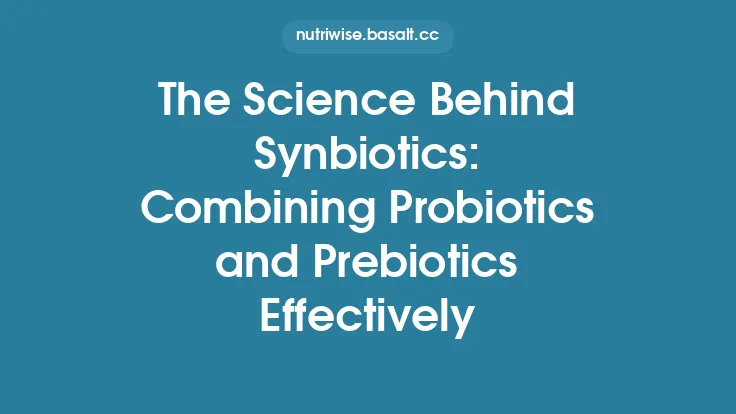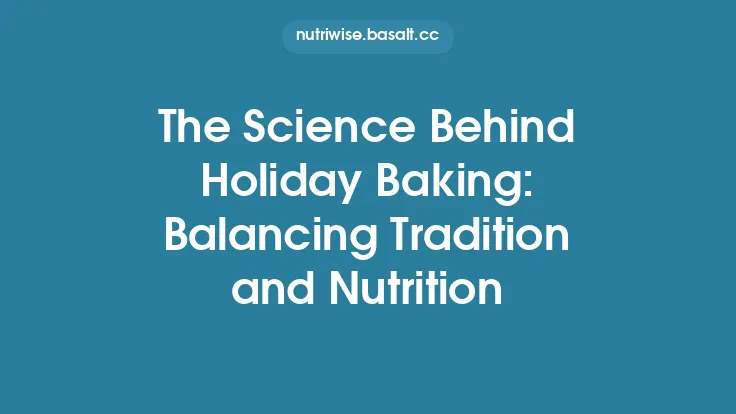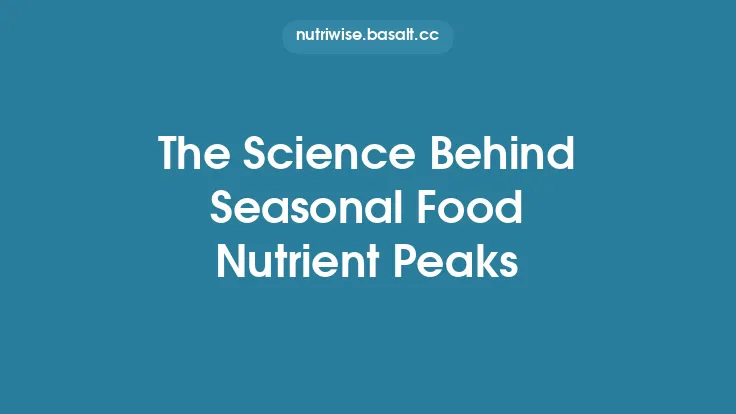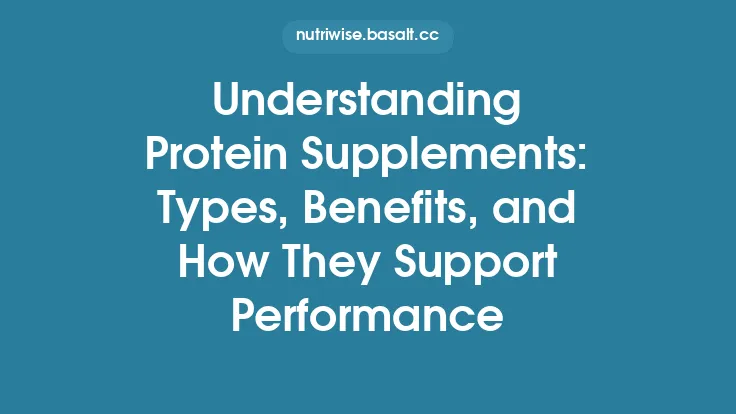Pea protein has surged to the forefront of plant‑based nutrition, not only because it offers a robust protein punch but also because its production aligns well with the principles of sustainable and ethical eating. Derived from the humble garden pea (Pisum sativum), this protein isolate or concentrate is now a staple in everything from sports nutrition powders to dairy‑free milks and meat analogues. Understanding the science behind pea protein—how it’s extracted, what makes it nutritionally valuable, and how its functional properties translate in the kitchen—provides a solid foundation for anyone looking to incorporate it into a balanced, environmentally conscious diet.
Understanding Pea Protein: Composition and Extraction
Pea protein is typically obtained from yellow split peas, which are first cleaned, de‑hulled, and milled into a fine flour. The protein is then separated from the starch and fiber through a series of steps that may include:
- Alkaline Extraction – The flour is mixed with water at a high pH (usually 8.5–10) to solubilize the protein while leaving most carbohydrates insoluble.
- Centrifugation – The slurry is spun to separate the protein‑rich supernatant from the solid residue.
- Precipitation – Adjusting the pH back to the isoelectric point of pea protein (around pH 4.5) causes the protein to precipitate out of solution.
- Drying – The precipitated protein is washed, neutralized, and spray‑dried, yielding a fine, off‑white powder.
Two main commercial forms exist:
- Pea Protein Isolate (PPI) – Contains ≥ 80 % protein, with most of the starch, fiber, and anti‑nutrients removed.
- Pea Protein Concentrate (PPC) – Typically 50–70 % protein, retaining more of the natural fiber and micronutrients.
The extraction process is water‑based and does not require harsh organic solvents, contributing to a lower environmental footprint compared with many animal‑derived proteins.
Nutritional Profile and Health Benefits
Protein Quality
Pea protein delivers all nine essential amino acids, though it is modest in methionine and cysteine (sulfur‑containing amino acids). The limiting nature of these two can be mitigated by pairing pea protein with complementary sources such as grains or nuts, but even on its own it provides a Protein Digestibility‑Corrected Amino Acid Score (PDCAAS) of around 0.78–0.85, comparable to many dairy proteins.
Micronutrients
Because the concentrate retains more of the original pea matrix, it also supplies:
- Iron – Non‑heme iron, enhanced by the presence of vitamin C in meals.
- Zinc – Important for immune function and enzyme activity.
- B‑vitamins – Particularly folate and B6, which support methylation pathways and neurotransmitter synthesis.
Bioactive Compounds
Peas are rich in phytochemicals such as saponins, phenolic acids, and flavonoids. While most of these are reduced during isolation, trace amounts remain and have been linked to:
- Antioxidant activity – Scavenging free radicals and reducing oxidative stress.
- Anti‑inflammatory effects – Modulating cytokine production in vitro.
Health Outcomes
Clinical studies have demonstrated several benefits of regular pea protein consumption:
- Muscle protein synthesis – Comparable to whey protein when ingested post‑exercise, especially when total daily protein intake meets recommended levels (1.2–2.0 g kg⁻¹ body weight).
- Satiety and weight management – High‑protein, fiber‑rich pea protein can increase feelings of fullness, aiding calorie control.
- Blood pressure regulation – Pea protein peptides have shown ACE‑inhibitory activity, which may modestly lower systolic pressure.
- Blood glucose stability – The low glycemic index of pea protein blends helps blunt post‑prandial glucose spikes.
Digestibility and Allergenicity
Pea protein is generally well‑tolerated. Its digestibility (measured by the Digestible Indispensable Amino Acid Score, DIAAS) ranges from 0.70 to 0.80, slightly lower than whey but higher than many other plant isolates. The processing steps remove most of the anti‑nutritional factors—such as phytic acid and trypsin inhibitors—that can impede protein absorption.
Allergenicity is low compared with soy or dairy, making pea protein a suitable alternative for individuals with common food allergies. However, a small subset of people with legume sensitivities may react, so labeling and personal testing remain important.
Environmental Advantages of Pea Protein Production
Peas are nitrogen‑fixing legumes, meaning they draw atmospheric nitrogen into the soil through symbiotic bacteria in their root nodules. This natural process reduces the need for synthetic nitrogen fertilizers, which are energy‑intensive to produce and can contribute to greenhouse gas emissions.
Key environmental metrics:
- Land Use – Pea protein yields roughly 2–3 kg of protein per square meter, outperforming most animal proteins and rivaling other legumes.
- Water Footprint – The water required to produce a kilogram of pea protein is estimated at 2,500–3,000 L, markedly lower than beef (≈ 15,000 L) and comparable to soy.
- GHG Emissions – Life‑cycle analyses place pea protein’s carbon intensity at 0.5–1.0 kg CO₂‑eq per kilogram of protein, a fraction of the 20–30 kg CO₂‑eq for beef.
These figures reinforce pea protein’s role in a diet that seeks to minimize ecological impact while meeting nutritional needs.
Functional Properties in Food Applications
Pea protein’s functional attributes make it a versatile ingredient for both processed and home‑cooked foods:
| Property | Culinary Impact |
|---|---|
| Solubility (pH 4–8) | Enables smooth incorporation into beverages, soups, and sauces without gritty texture. |
| Emulsification | Forms stable oil‑in‑water emulsions, useful for plant‑based milks, dressings, and mayonnaise alternatives. |
| Foaming | Generates airy structures in baked goods, protein‑rich meringues, and vegan whipped toppings. |
| Gelation (heat‑induced) | Provides meat‑like bite in patties, nuggets, and plant‑based jerky; also thickens yogurts and puddings. |
| Water‑Holding Capacity | Improves moisture retention in breads and muffins, extending shelf life. |
Processing conditions (pH, temperature, ionic strength) can be tuned to accentuate a specific function, allowing food technologists to design products that mimic the texture of animal proteins while staying entirely plant‑based.
Culinary Techniques and Recipe Ideas
1. Smoothies and Shakes
- Base: Blend 1–2 tablespoons of pea protein isolate with frozen fruit, leafy greens, a splash of plant milk, and a pinch of cinnamon.
- Tip: Use a high‑speed blender to fully dissolve the powder; a brief pause to let bubbles settle yields a creamier mouthfeel.
2. Savory Soups and Sauces
- Thickening: Whisk pea protein concentrate into a simmering broth (1 % w/v) to achieve a velvety texture without adding dairy.
- Flavor: Pair with roasted garlic, smoked paprika, and a drizzle of olive oil for depth.
3. Plant‑Based Burgers
- Binder: Combine pea protein isolate (10 % of total weight) with mashed beans, grated vegetables, and spices.
- Texture: Add a small amount of oat flour or breadcrumbs to improve cohesion; form patties and sear on a hot skillet for a caramelized crust.
4. Baked Goods
- Protein‑Boosted Muffins: Substitute ¼ of the all‑purpose flour with pea protein isolate. This raises the protein content while maintaining crumb structure.
- Gluten‑Free Bread: Use a blend of pea protein, tapioca starch, and psyllium husk to mimic the elasticity of gluten.
5. Dairy Alternatives
- Homemade Pea Milk: Soak ½ cup of yellow peas overnight, blend with 4 cups of water, strain, then add pea protein isolate (1–2 tablespoons) and a natural sweetener.
- Yogurt‑Style Ferments: Inoculate a pea‑protein‑enriched base with probiotic cultures; incubate at 42 °C for 6–8 hours to develop tang.
6. Snack Bars and Energy Balls
- No‑Bake Bars: Mix rolled oats, nut butter, honey, dried fruit, and pea protein isolate. Press into a pan, chill, and slice.
- Protein Balls: Combine dates, almond flour, cocoa powder, and pea protein; roll into bite‑size spheres and coat with shredded coconut.
Incorporating Pea Protein into Everyday Meals
A practical approach is to layer pea protein throughout the day:
- Breakfast: Add a scoop to oatmeal or a chia‑seed pudding for a protein boost.
- Lunch: Stir pea protein concentrate into a quinoa salad dressing or a lentil soup.
- Snack: Keep a small jar of flavored pea protein powder for quick shakes.
- Dinner: Use pea protein as a binder in veggie‑based meatballs or as a thickener in curry sauces.
Because pea protein is relatively neutral in flavor, it adapts well to both sweet and savory contexts. Adjust seasoning as needed, and consider pairing with acidic components (lemon, vinegar) to enhance overall taste perception.
Potential Limitations and Considerations
- Methionine Deficiency: While pea protein is high in most essential amino acids, its lower methionine content means that relying exclusively on it for protein may require complementary foods (e.g., nuts, seeds, or whole grains).
- Texture Sensitivity: Over‑mixing pea protein powders can lead to a gummy mouthfeel, especially in cold beverages. Gradual incorporation and brief blending mitigate this.
- Processing Variability: Not all commercial pea protein products are created equal; some may retain higher levels of residual starch or fiber, affecting solubility and taste. Reading ingredient labels and, when possible, choosing isolates for smooth applications is advisable.
- Allergen Awareness: Though rare, legume allergies can include peas. Individuals with known legume sensitivities should verify product safety.
Future Directions in Pea Protein Research
The scientific community is actively exploring ways to enhance the nutritional and functional profile of pea protein:
- Enzymatic Hydrolysis – Breaking down protein chains into smaller peptides can improve digestibility and generate bioactive sequences with antihypertensive or antioxidant properties.
- Fermentation – Using selected microbes to ferment pea protein can reduce anti‑nutrients further and develop novel flavors reminiscent of cheese or umami‑rich broths.
- Genetic Optimization – Breeding pea varieties with higher protein content and a more balanced amino‑acid spectrum (especially increased methionine) holds promise for next‑generation isolates.
- Hybrid Blends – Combining pea protein with emerging sources such as algae, mycoprotein, or insect protein may yield synergistic textures and complete amino‑acid profiles while maintaining sustainability goals.
These advances aim to solidify pea protein’s position not just as a convenient supplement, but as a cornerstone of a resilient, plant‑forward food system.
By delving into the chemistry of extraction, the nuanced nutritional makeup, and the versatile culinary functions of pea protein, we gain a comprehensive picture of why this legume‑derived ingredient is gaining traction among nutritionists, chefs, and environmentally conscious consumers alike. Whether you’re crafting a high‑performance post‑workout shake, designing a comforting vegan stew, or simply looking to boost the protein content of everyday meals, pea protein offers a scientifically backed, sustainable, and adaptable solution.





